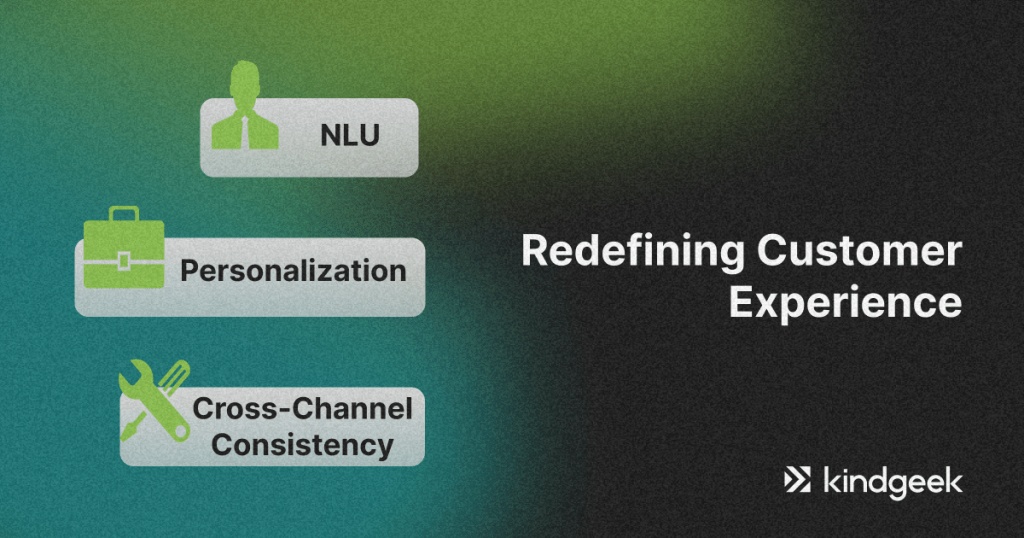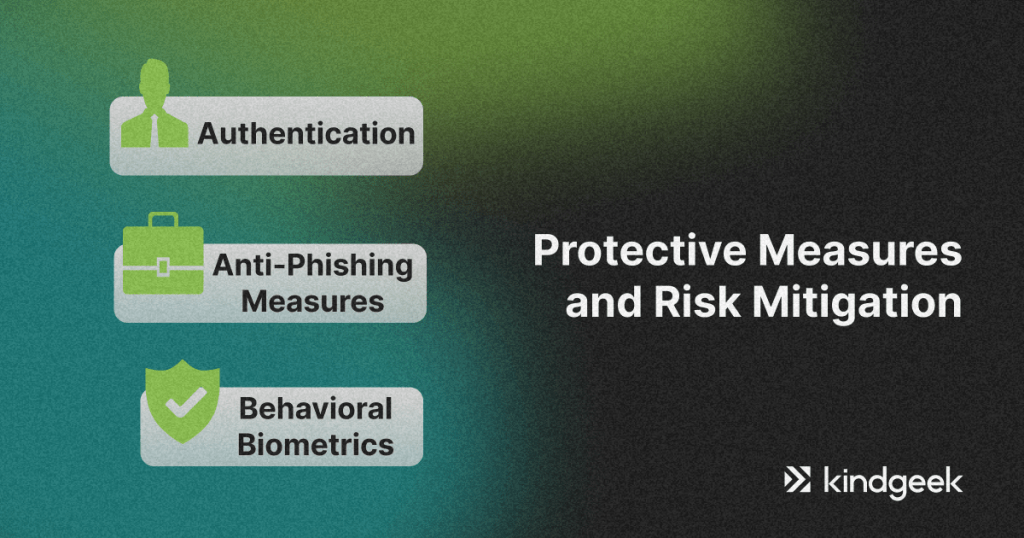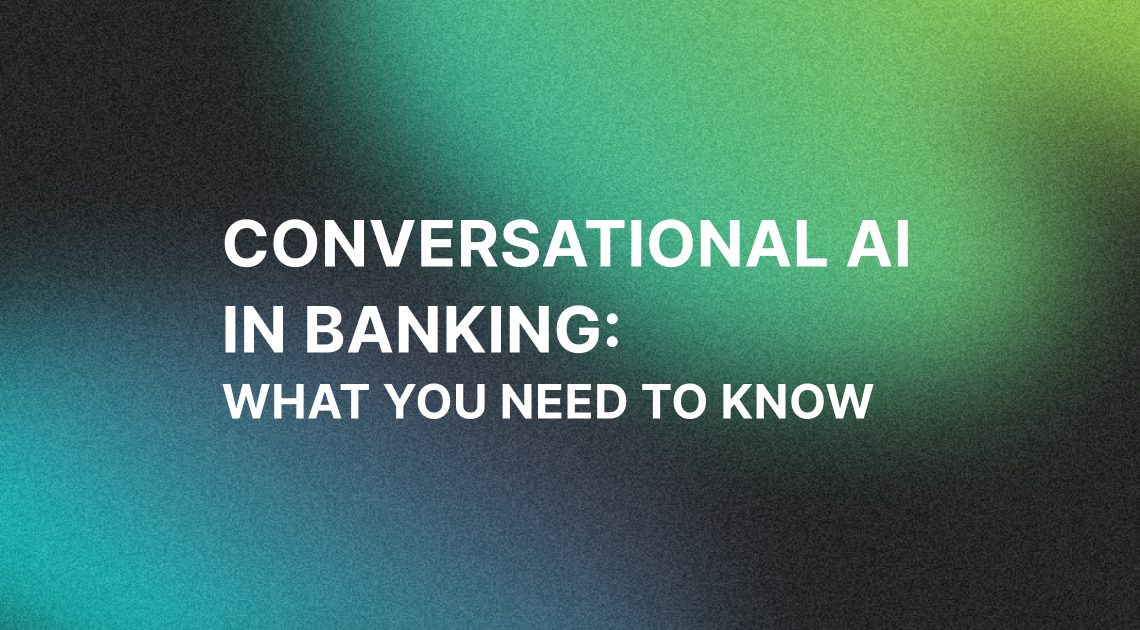Recently updated on April 18, 2025
As traditional banking models face increasing pressure from digital disruption and changing consumer expectations, financial institutions are turning to AI-powered chatbots and virtual assistants to stay competitive and relevant in the market. From answering simple account inquiries to offering complex financial advice, these intelligent systems are transforming customer service, enhancing operational efficiency, and opening up new avenues for revenue generation.
As we delve deeper into this article, we’ll explore some crucial benefits of conversational AI in banking, examining how it’s improving customer satisfaction, streamlining internal processes, and providing security and fraud prevention. And, of course, we will try to predict what the future of conversational AI in banking holds for us. Will you join us on this journey?
Conversational AI 101
Conversational AI is a branch of artificial intelligence that allows machines to simulate human-like conversations. It combines natural language processing (NLP), machine learning (ML), and other AI technologies to enable:
- understanding of human speech and text input;
- interpreting the intent and context of the communication;
- generating appropriate responses in natural language;
- learning from interactions to improve future conversations.
Here, we are mostly talking about conversational AI chatbots in banking, virtual assistants and voice-activated systems. Conversational AI is used to provide customer service, assist with transactions, offer financial advice, and streamline various banking operations.
Conversational AI brings many benefits to banks and other financial institutions, mainly by enhancing customers’ experience, providing security, preventing fraud, and increasing efficiency. We will discuss it all in detail later in this article, but let`s cover some other improvements that come with this technology first:
Data-driven insights
Imagine a customer who just opened their first savings account. They chat with the bank’s AI assistant about their financial goals without knowing that this conversation is part of a much bigger picture. Behind the scenes, AI collects and analyzes data from thousands of such interactions, spots trends, predicts needs and understands customer behaviour on a massive scale.
This wealth of information is invaluable for the bank because it allows it to anticipate customer needs before they arise, identify and address pain points quickly, and develop products that truly resonate with its customers.
Innovation and competitive advantage
As data flows in from AI interactions, the bank can use those insights to work on improvements and innovations. Let`s say launch a voice-activated budgeting tool or a predictive saving feature. Each new product is met with enthusiasm from customers as they come from the same customers’ needs.
Of course, this constant innovation keeps the bank ahead of its competitors.
Customization
After some time, the AI learns the communication style of different customers and adapts accordingly. It offers financial advice that’s perfectly tailored to each situation. Maybe it even adjusts its interface based on the usage patterns.
Just like that, you have a personal banker, financial advisor, and teacher all rolled into one. And the best part? It is available 24/7.
Redefining Customer Experience
Maybe one of the biggest areas of Conversational AI influence in financial services is customer relations. This technology transforms interactions with users into seamless, personalized experiences. It is redefining what customers can expect from their financial institutions, blending convenience with intelligence. According to the State of AI in Financial Services report, over 27% of financial institutions using artificial intelligence have reported improved customer experience.
At its core, conversational AI provides round-the-clock accessibility. Customers no longer need to conform to bank hours or endure long wait times. Whether it’s a midnight query about account balances or an early morning need to dispute a transaction, the AI is always ready to assist.
But the impact goes beyond mere availability. These AI systems offer instant, accurate responses, dramatically reducing the friction in banking operations. Complex processes are broken down into manageable, conversational steps, making banking more accessible to a wider audience.
This level is achieved because of some important elements, such as Natural Language Understanding, personalization and cross-channel consistency. Let`s take a closer look.

Natural Language Understanding (NLU)
NLU is a critical component of conversational AI that allows systems to comprehend and interpret human language in all its complexity. In banking, this technology significantly enhances customers experience by enablening extractions even from unstructured text, which identifies nuance in language and derives hidden or abstract meanings from text or voice.
It accurately interprets customer intent, even when queries are not perfectly phrased or have a double meaning, and handles context and nuance, allowing for more natural, human-like conversations. NLU supports multiple languages and dialects, making banking services more accessible to diverse populations. Importantly, it continually learns from interactions to improve understanding over time, resulting in increasingly smooth communications.
Personalization
AI-driven personalization in banking creates tailored experiences for each customer, significantly improving their interaction with financial services. It offers customized product recommendations based on individual financial situations and goals and provides personalized financial advice that takes into account a customer’s unique circumstances and preferences.
The AI adapts communication styles to match individual customers’ preferences, whether formal or casual, detailed or concise. It proactively alerts customers to relevant opportunities or potential issues based on their specific financial patterns.
Personalization may even extend to creating customized financial education plans to improve individual financial literacy and adjusting user interfaces to highlight features most relevant to each customer’s needs and usage patterns.
Cross-Channel Consistency
In today’s omnichannel banking environment, maintaining consistency across all platforms is crucial for a seamless customer experience. This means ensuring that customer information and interaction history are available across all channels, eliminating the need for customers to repeat themselves.
It provides a uniform look and feel across web, mobile, and in-branch interfaces for a cohesive brand experience. Customers can start a transaction on one channel and seamlessly continue it on another.
The tone and personality of AI assistants always remain consistent across all platforms. Updates and changes are synchronized across all channels in real time to prevent conflicting information. Importantly, the same level of personalization is offered regardless of the channel the customer chooses to use.
All of these elements create a banking experience that is intuitive, relevant, and frictionless. Customers can interact with their bank in ways that feel natural to them, receive information and services tailored to their unique needs, and enjoy a seamless experience regardless of how they choose to engage with their financial institution.
Protective Measures and Risk Mitigation
Security has always been a paramount concern for financial institutions and their customers. Over the past two decades, financial services firms have suffered $12bn in losses due to cyber attacks, according to a report from the International Monetary Fund.
Conversational AI in finance has emerged as a powerful ally in this ongoing battle against financial crime, bringing a new level of sophistication and efficiency to security measures. By leveraging advanced algorithms, machine learning, and natural language processing, conversational AI is revolutionizing the way banks approach security and fraud prevention.
This technology doesn’t just react to threats. It proactively identifies, analyzes, and mitigates risks in real-time, often before they can materialize into actual security breaches or fraudulent activities.
Let`s delve deeper into the specific ways conversational AI boosts security and risk mitigation in banking.

Authentication
Conversational AI in mobile banking apps and above it is revolutionizing authentication processes, making them more robust yet less intrusive. Traditional authentication often relies on static information like passwords or security questions. In contrast, AI-powered systems can implement dynamic, multi-factor authentication seamlessly within a conversation.
For instance, the AI might ask the user to confirm their identity through a combination of voice recognition, knowledge-based questions, and behavioural patterns. These challenges can be naturally woven into the conversation, making the process feel less like a security check and more like a normal interaction.
Moreover, AI can adapt the level of authentication required based on the risk assessment of the requested action. A simple balance inquiry might require minimal verification, while a large transfer could trigger more stringent checks.
Anti-Phishing Measures
Conversational AI plays a crucial role in combating phishing attempts, one of the most common forms of banking fraud. AI systems can detect and flag suspicious patterns in conversations that might indicate a phishing attempt.
For example, if a user suddenly asks for sensitive information in an unusual context, the AI can recognize this as atypical behaviour. It can then either block the request, issue a warning to the user or escalate the interaction to a human agent for further verification.
Additionally, AI can educate users about phishing risks in real time. If it detects that a user might be falling for a phishing attempt, it can provide immediate, contextual warnings and advice on how to stay safe.
Behavioral Biometrics
This is an area where AI truly shines in enhancing security. Behavioural biometrics refers to the unique patterns in how individuals interact with devices and systems. In the context of conversational AI chatbots for the banking industry, this extends to how users communicate.
By building a profile of each user’s behavioural biometrics, the AI can spot anomalies that might indicate a fraudster has gained access to the account. For instance, if someone logs in with the correct credentials but their typing pattern and language use don’t match the account owner’s profile, the AI can flag this as suspicious and require additional verification.
What’s particularly powerful about behavioural biometrics in conversational AI is that it’s a continuous form of authentication. Rather than just verifying identity at login, the system is constantly assessing whether the user’s behaviour matches their established profile throughout the entire interaction.
The integration of these elements creates a sophisticated, layered approach to security. Conversational AI acts as an intelligent guardian, continuously analyzing interactions for signs of fraud while providing a smooth, natural user experience. This not only enhances security but also builds user trust, as customers feel protected without being burdened by cumbersome security procedures.
Operational Boost
Operational effectiveness is crucial for maintaining a competitive edge and meeting ever-increasing customer expectations. Conversational AI can revolutionise how banks handle day-to-day operations and customer interactions. By leveraging advanced technologies, banks are now able to streamline processes, extend service hours, and dramatically improve response times. And of course, cut operational costs.
For example, according to Gartner, by 2026, conversational artificial intelligence deployments just within contact centres will reduce agent labour costs by $80 billion. Let`s see exactly how:

Automation of Routine Tasks
Conversational AI excels at handling repetitive inquiries and transactions that once consumed a significant portion of bank employees’ time. Account balance checks, fund transfers, statement requests, and basic troubleshooting are now resolved swiftly and accurately without human intervention.
This automation extends to form filling and applications, where AI guides customers through processes, automatically populating known information and validating entries in real time. By taking on these high-volume, routine tasks, AI frees up human staff to focus on complex issues that require empathy, creativity, and strategic thinking.
24/7 Availability
The implementation of conversational AI banking has effectively eliminated the concept of “banking hours,” offering round-the-clock service to customers. This 24/7 availability means that customers can perform banking tasks or seek assistance at any time, regardless of time zones or holidays.
The AI maintains the same level of efficiency and knowledge at all hours, ensuring uniform service quality. During high-traffic periods, the AI can handle an increased volume of inquiries without long wait times or service degradation. For international banks, this constant availability allows seamless operations across different time zones, effectively serving a global customer base.
Faster Resolution Times
AI systems can now quickly search and retrieve relevant information from vast databases, providing immediate answers to complex queries. Unlike human agents who handle one query at a time, AI can process multiple customer requests simultaneously. By analyzing patterns in customer inquiries, AI can anticipate and prepare responses to likely follow-up questions, speeding up the overall resolution process.
When human intervention is necessary, AI can quickly transfer the interaction to the most appropriate department or specialist, along with a complete context of the conversation, ensuring a smooth transition and faster problem-solving.
As the banking industry continues to evolve, conversational AI stands at the forefront of operational effectiveness. It sets a new standard for efficiency, responsiveness, and service quality.
The Future of Conversational AI in Banking
The future of conversational AI for banking is bright and transformative. We can expect more sophisticated AI systems that offer increasingly human-like interactions and handle complex financial inquiries with ease.
Integration with emerging technologies like blockchain and IoT will create new possibilities for personalized banking experiences. AI-driven predictive analytics will enable proactive customer service and improved risk management. While human employees will focus on high-value tasks, AI will handle routine operations more efficiently.
Despite challenges in regulation and ethics, conversational AI is set to redefine banking, driving innovation and expanding the horizons of financial services. This technology will be central to shaping a banking future that’s more responsive to customer needs and more agile in a rapidly changing financial landscape.
If you want to be a part of this future, check out Kindgeek`s AI support assistant, which provides a quick, personalized, and human-like service to build strong customer relationships that propel your business growth and help maximize revenue potential. Along with AI services, Kindgeek also provides a wide range of custom development services, a number of white-label solutions and any integration for financial operations that comes to mind. So don`t hesitate to contact us.




